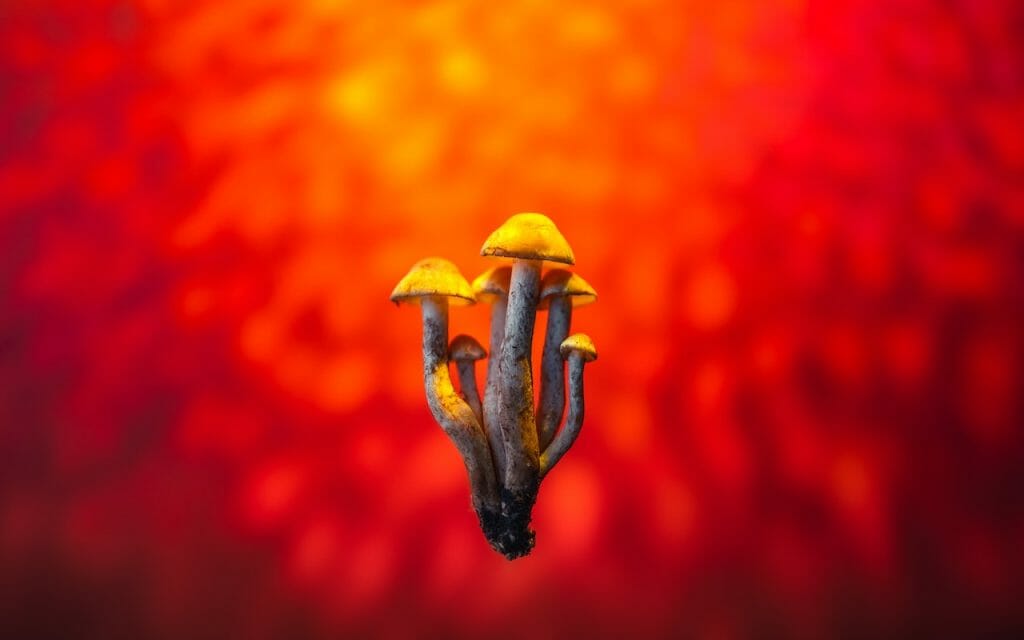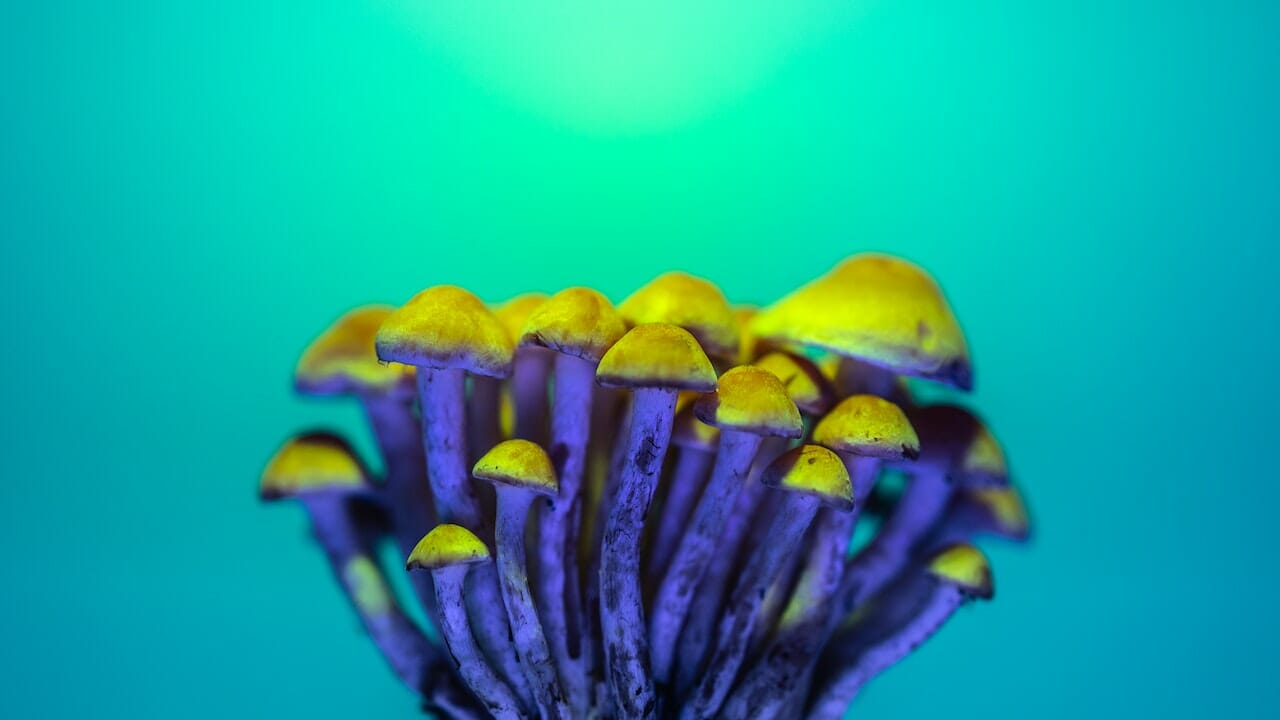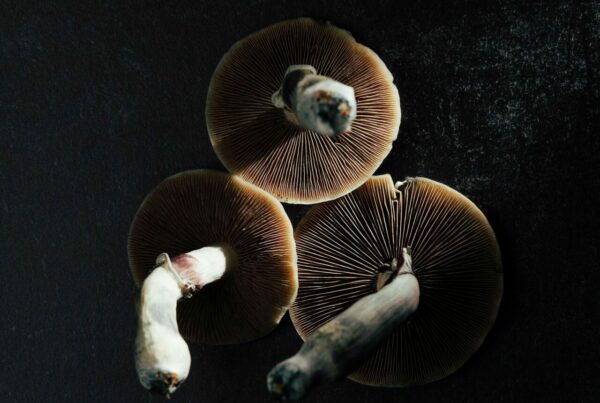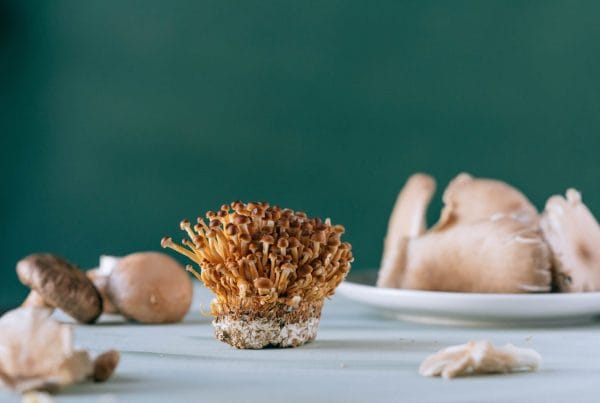LSD (lysergic acid diethylamide) is a highly powerful hallucinogen that has been the subject of extensive psychedelic research. Initially popular for recreational purposes, LSD is now viewed as a psychoactive substance that could have mental health benefits. This change in perception has paved the way for further research into the effects of LSD in more palatable forms, such as LSD edibles.
Key Takeaways:
- LSD is a powerful hallucinogen derived from the ergot fungus.
- LSD shares similarities with psilocybin and interacts with the 5-HT2A receptors.
- LSD can cause alterations in vision, mood changes, dissolution of ego, and pseudo-hallucinations.

Getting to Know LSD
LSD is an extremely powerful hallucinogen that can profoundly alter an individual’s perception of reality and significantly distort sensory experiences. LSD originates from “ergot,” a fungus that grows on rye and other grains.
At the molecular level, LSD is a complex chemical belonging to the ergoline family. It comprises a hexahydroindole group and a quinoline group (lysergic acid), both of which are bicyclic. The name ‘Lysergic Acid Diethylamide’ stems from the functional group linked to its core. LSD’s structure is akin to other ergoline alkaloids, like ergotamine, found in the ergot fungus Claviceps purpurea, and the neurotransmitter serotonin.
The Effects of LSD
Once consumed, LSD enters the brain and initiates chemical reactions that can persist for several hours. LSD can induce the following short-term effects:
- Unpredictable mood changes
- Distortions in perception
- Dizziness
- Decreased appetite
- Loss of movement coordination
The Advantages What Are the Potential Benefits of Using LSD?
LSD offers a range of potential benefits that largely depend on the dosage taken. Much of the research available concentrates on the advantages associated with consuming smaller amounts of this psychedelic substance. In this article, we explore the positive impacts of LSD use.
Pain Relief and Neural Development
Researchers at Maastricht University discovered that a single microdose of LSD can produce pain-alleviating effects that persist for at least five hours, if not longer.
In the Cold Pressor Test, where participants immerse their hands in 3°C (37.4°F) water for as long as possible, those who had taken 20 mg of LSD were able to maintain their hands in the water for 20% longer than the control group. Furthermore, they reported less pain and discomfort.
Additionally, LSD can aid in the development and growth of the brain’s 86 billion neurons. Moderate LSD doses, ranging from 5 to 20 ug, increase the levels of BDNF in blood plasma. This is critical as mood disorders such as depression, often associated with neuroplasticity deficits, could be mitigated by LSD’s positive influence on neuronal health.
Improvement of Mental Health
Dr. Robin Carhart-Harris of Imperial College London developed the entropic brain hypothesis. This theory posits that mental health disorders originate from rigid thought patterns, sustained by an overactive default mode network (DMN). Psychedelic substances such as LSD can interrupt the DMN, boost brain entropy, and help dismantle harmful neural pathways while promoting the creation of beneficial ones.
A study involving over 1,000 microdosers showed a reduction in depression symptoms. Another comprehensive cross-sectional study found decreased negative moods and harmful attitudes, accompanied by an increase in open-mindedness and cognition.
Therapy for Addiction
A meta-analysis of randomized-controlled clinical trials utilizing LSD in psychiatry concluded that LSD is most effective for treating alcohol dependency. This conclusion is reinforced by the positive results reported by many patients treated for alcoholism by Humphrey Osmond and at the Spring Grove Hospital Centre during the 1950s and 1960s.
Easing End-of-Life Anxiety and Depression
Research conducted by Dr. Peter Gasser indicates that LSD-assisted psychotherapy can help patients with terminal cancer mitigate their anxiety related to their impending mortality. Additionally, the treatment has been found to enhance their subjective quality of life. Currently, a Phase 2 trial is underway to explore the potential effects of LSD therapy on depression.
Deciphering LSD Edibles: Their Composition and Method of Production
LSD edibles constitute a group of food and beverage products infused with the psychedelic substance called LSD. These edibles come in diverse forms, from chocolates, candies, and baked goods, to more unusual items like LSD-infused mints.
The Contents
- LSD: This is the principal compound that triggers psychedelic effects. It’s carefully measured and incorporated into the edible.
- Edible Base: The LSD is usually dissolved or mixed into a consumable substance such as a gummy, candy, sugar cube, or other edible materials. These substances act as a carrier for the psychedelic compound.
- Flavoring and Ingredients: Depending on the specific edible product, it may contain flavorings, sweeteners, and other ingredients to enhance taste and texture. These could be natural or artificial flavorings, colors, and sugars, and can vary widely.
Process of Manufacture:
- LSD Synthesis: The first step involves the chemical production of LSD. This process requires extensive knowledge of organic chemistry and access to necessary chemicals, equipment, and a laboratory environment.
- Liquid Formulation: Once the LSD is synthesized, it is typically transformed into a liquid state by dissolving it in a solvent. This liquid forms a concentrated LSD solution.
- Infusion: The liquid LSD is then infused into an edible base such as gummy candies, sugar cubes, or blotter paper. The base absorbs the liquid, enabling the oral consumption of LSD.
Experiencing the Psychedelic Effects of Psychoactive Substances in LSD Edibles
LSD elicits intense visual effects. Colors seem more vivid, objects may appear to have halos or rainbows around them, and shapes can change. Regardless of whether the eyes are open or closed, users may experience
LSD serves as a catalyst for altering one’s self-perception and perception of the environment. This substance can induce a variety of psychological states. Thoughts may appear crystal clear and meaningful, or they may lack any logical flow. Other potential effects include altered perceptions of time, distance, and body image. The line between the individual’s ego and the external world may become blurred. Some users report synaesthesia, a phenomenon in which senses merge, such as seeing music or hearing colours.
Suggested LSD Products
There’s a wide array of LSD edibles available in the market. However, it’s vital to buy from a trusted dispensary to ensure that the edibles contain LSD and not other substances like PCP, ecstasy, or ketamine.
Deadhead Chemist – LSD Infused Gummies
Deadhead Chemist offers LSD-infused edibles, each packing 100 micrograms (ug) of LSD, available in an assortment of flavours. Each package contains one gummy, which has shown promise in aiding individuals suffering from conditions such as obsessive-compulsive disorder (OCD), post-traumatic stress disorder (PTSD), alcohol addiction, depression, and cluster headaches.
Deadhead Chemist – Mint Tea
Deadhead Chemist’s raspberry mint tea provides a more palatable and flavourful approach to experiencing the effects of LSD. LSD and other psychedelic substances simulate the serotonin neurotransmitter, enhancing the brain’s flow state.
Earthly Delights – Candy Flips
Candy flipping emerged during the rave scene of the late 1980s and continues to be popular among adventurers and party-goers. Users often report intense feelings of love and unity, accompanied by captivating visual effects such as enhanced colours, transforming objects, and complex geometric patterns.
Concluding Remarks
LSD is traditionally linked with transformative experiences. The growing scientific comprehension of this substance has led to a rise in its popularity, and the emergence of LSD edibles introduces a novel way for individuals to explore its effects. These delectable edibles have become a popular method for those who wish to safely and enjoyably experiment with LSD in measured doses.
As the leading provider of top-quality shrooms online in Canada, Schedule35 Canada boasts an extensive array of LSD-infused edibles and cannabis products. Take your time to peruse our collection, add your favorite items to your cart, and unwind at home while we handle the delivery. Our diverse range also includes psilocybin shrooms, edibles, beverages, and capsules for your convenience. Don’t miss out on visiting our LSD delivery page for further details!
Frequently Asked Questions
What sets LSD apart from psilocybin?
FEATURES LSD PSILOCYBIN Source Semi-synthetic chemical compound Occurs naturally in fungi Possible Forms Tabs, microdots, liquid, gummies, blotter paper Dried mushrooms, capsules, teas, chocolates Potency Highly potent, in microgram doses (ug) Varies based on mushroom species and preparation Onset and Duration Quick onset (15-60 minutes), short lasting (3-5 hours) Slower onset (30-60 minutes), moderate duration (4-6 hours)
How can one avoid unpleasant experiences while using LSD?
- Choose Your Environment Wisely
- Prepare Your Mindset
- Start with a Small Dose
- Ensure a Trip Supervisor is Present
- Create a Peaceful Atmosphere
- Utilize Deep Breathing and Grounding Techniques
- Accept and Let Go
What is the duration of the effects?
The impact of the acid typically begins to show between 30-60 minutes after intake. Those who are more responsive to psychedelics may start to experience the effects In a short span of 15 minutes, you may start noticing the effects of acid. The true realization of being on acid usually sets in after about an hour. The peak of your experience will be around the three-hour mark. During this time, you may feel as if time is moving at a slower pace and hallucinations may occur.
Hang in there, it’s not unusual to feel a sense of disconnection from reality at this stage. The peak phase typically lasts between 3 to 5 hours, after which you’ll enter the offset phase lasting an additional 3 to 5 hours.
How does LSD interact with the human body?
LSD mainly interacts with the brain’s serotonin system, binding to and stimulating the 5-HT2A receptor. This interaction sets off a series of neurochemical and physiological reactions. The effects of LSD, which can vary significantly, are influenced by certain factors.
Does LSD come in forms other than edibles?
Yes. LSD is available in a variety of formats. The four main types of LSD products are blotter paper, liquid solutions, tablets or microdots, and gelatin sheets.
Further Reading:
| FEATURES | LSD | PSILOCYBIN |
| Source | Semi-synthetic chemical compound | Occurs naturally in fungi |
| Possible Forms | Tabs, microdots, liquid, gummies, blotter paper | Dried mushrooms, capsules, teas, chocolates |
| Potency | Highly potent, in microgram doses (ug) | Varies based on mushroom species and preparation |
| Onset and Duration | Quick onset (15-60 minutes), short lasting (3-5 hours) | Slower onset (30-60 minutes), moderate duration (4-6 hours) |





